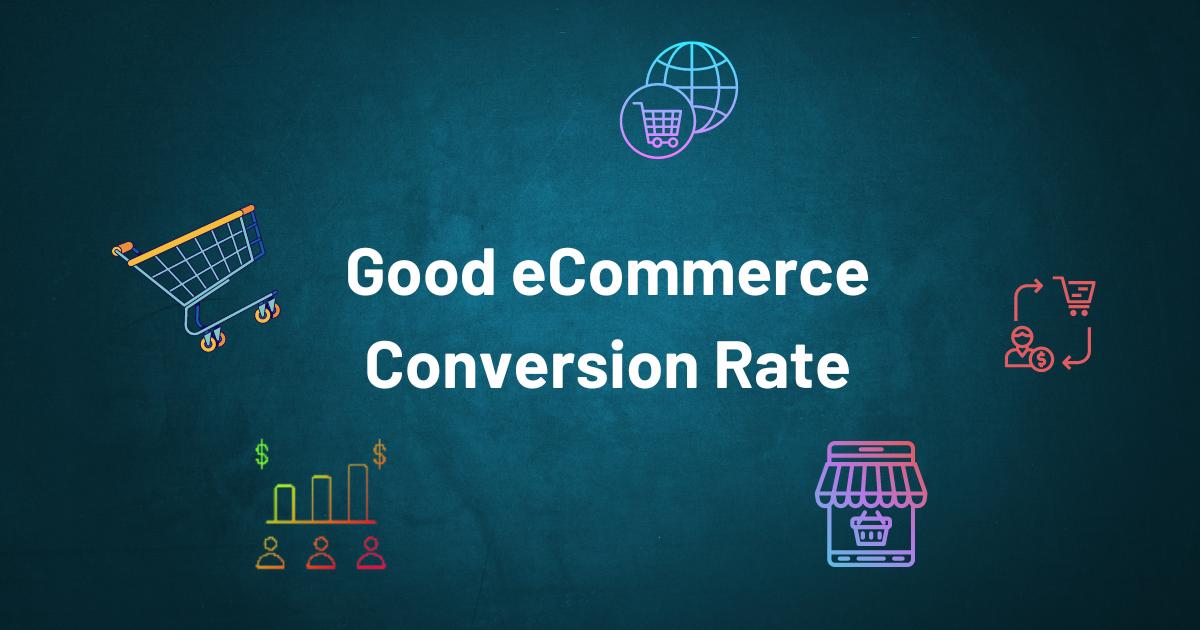
Ecommerce conversion rate is an essential metric for measuring the success of an online business. It refers to the percentage of visitors to a website who take a desired action, such as making a purchase or filling out a contact form.
Have you ever wondered why some e-commerce websites are able to convert more visitors into customers than others?
The answer lies in their conversion rate.
It's a super important number that tells you how many visitors to your website actually become customers. A good conversion rate means more money and happy customers for your business!
Let's dive in and discover what makes a good e-commerce conversion rate, and how you can make sure your online store is thriving. Get ready to learn some fun and fancy words along the way!
What is an eCommerce conversion rate?
The E-commerce Conversion rate is the percentage of visitors to a website who complete a desired action, such as making a purchase. It's calculated by dividing the number of conversions by the total number of website visitors and multiplying by 100.
Conversion rate = the number of specific actions taken in a period of time / total number of visits to your site in the same period of time.
For example, if your website had 100 visitors and 2 of them made a purchase, your conversion rate would be 2 ÷ 100 x 100 = 2%.
Factors that affect eCommerce conversion rates
- Website design and user experience: A clean, easy-to-navigate website with clear calls-to-action can improve the chances of visitors taking a desired action. On the other hand, a cluttered or confusing website can lead to visitors leaving the site without taking any action.
- Product pricing and availability: Customers are more likely to make a purchase if they perceive the price to be fair and if the product is in stock and readily available.
- Trust and credibility indicators: Trust and credibility play a significant role in conversion rates. Indicators such as customer reviews, testimonials, and security badges can help to build trust and credibility with visitors, increasing their likelihood to convert.
- Marketing and advertising efforts: The marketing and advertising efforts used to drive traffic to a website can also affect conversion rates. Targeted advertising and relevant promotions can attract the right visitors to a website, increasing the likelihood that they will convert.
Good eCommerce conversion rate: Industry standards and Benchmarks
Average conversion rates by industry
To understand how well your website is performing in terms of conversion rate, it is important to have a benchmark to compare against.
Average conversion rates vary by industry, with some industries having higher rates than others.
For example, the average conversion rate for e-commerce websites is around 2-3%, while for B2B websites it can be as low as 1%.
Comparison to industry leaders
It can also be beneficial to compare your website's conversion rate to the industry leaders in your niche. This can give you a sense of the potential for improvement and give you an idea of what a "good" conversion rate looks like in your specific industry. By benchmarking against industry leaders, you can set goals and aspirations for your own business.
Average eCommerce conversion rate by industries
Global eCommerce website conversion rate: 2.58%
US eCommerce website conversion rate: 2.57%
Fashion and apparel: 2.7%
Health and beauty: 3.3%
Entertainment: 2.5%
Household goods: 2.1%
Electronics: 1.9%
Food and beverage: 4.6%
7 Strategies to Optimize Conversion Rates
1. A/B testing
This involves creating two versions of a website element, such as a call-to-action button or product description, and testing which version performs better with visitors.
2. Personalization and targeting
Personalizing the website experience for visitors, such as showing them products or promotions based on their browsing history, can also increase conversions. Similarly, targeted advertising and marketing efforts can attract the right visitors to the website, increasing the likelihood that they will convert.
3. Optimizing checkout and payment processes
Streamlining the checkout process and offering multiple payment options improve conversion rates to a greater extent. A seamless checkout process with clear, easy-to-follow steps can increase the likelihood that a customer will complete their purchase.
4. Utilizing customer feedback and data analysis
By analyzing customer feedback and website data, you can gain insights into what is and isn't working on your website. This information can then be used to make informed decisions and improve the overall website experience for visitors.
5. High-Quality Product Images
Providing clear and detailed product images can help customers make informed decisions and increase the likelihood of a conversion.
6. Loyalty programs or rewards
Implementing a loyalty program or offering rewards for repeat purchases can incentivize customers to return to your website and make more purchases, increasing your conversion rate.
7. Limited-time offers
Offering limited-time promotions or creating a sense of urgency with phrases like "limited stock" or "ends soon" can also increase conversions. These tactics encourage customers to take action quickly before the offer expires.
Wrapping up
A good e-commerce conversion rate is a key factor in the success of an online store. This rate measures the percentage of website visitors who become customers and is affected by factors such as website design, product pricing and availability, trust and credibility indicators, and marketing efforts.
The average conversion rate for e-commerce sites is around 2-3%, but it can vary by industry. To improve your conversion rate, you can implement strategies such as A/B testing, personalization and targeting, optimizing checkout processes, utilizing customer feedback and data analysis, implementing loyalty programs or rewards, and offering limited-time offers.
By understanding what makes a good e-commerce conversion rate and using these strategies, you can make sure your online store is thriving!
